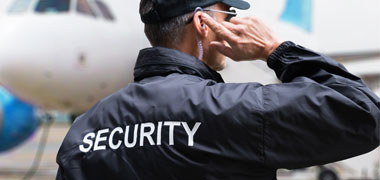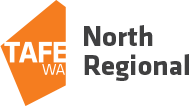
How do I become a deckhand?
Certificate II in Fishing Operations
- There are no mandated entry requirements.
 South Metropolitan TAFE
South Metropolitan TAFE
Certificate II in Maritime Operations (Coxswain Grade 1 Near Coastal)
- There are no mandated entry requirements.








Certificate I in Maritime Operations (Coxswain Grade 2 Near Coastal)
- There are no mandated entry requirements.



Certificate I in Maritime Operations (General Purpose Hand Near Coastal)
- There are no mandated entry requirements.





Related occupations
General Purpose Hand
A General Purpose Hand performs various duties on a marine vessel, assisting passengers, managing cargo, cleaning, and conducting safety checks.
Coxswain
A Coxswain steers small vessels, navigates courses, communicates with crew, and prioritises safety during journeys and emergencies.
Second Engineer
A Second Engineer repairs and maintains equipment on a vessel, handling mechanical, electrical, and hydraulic systems while ensuring smooth operations.
Chief Cook
A Chief Cook prepares meals on a vessel, ensuring ingredient availability, hygiene, and special dietary needs while managing tasks efficiently.
Sea Captain
A Sea Captain navigates and manages a vessel, ensuring safety and leadership while transporting passengers or cargo and communicating with the crew.
Chief Engineer
A Chief Engineer oversees machinery maintenance, designs equipment, supervises teams, and requires strong analytical and leadership skills.
Marine Mechanic
A Marine Mechanic repairs boats and maritime equipment, specialising in engines and systems while demonstrating problem-solving skills.
Marine Engineer
A Marine Engineer maintains and repairs shipping equipment, working on various vessel systems and ensuring effective operation through servicing and problem-solving.
Boat Builder
A Boat Builder constructs and repairs maritime vessels, customising designs to client specifications and specialising in areas like interiors or masts.
Shipwright
A Shipwright builds and repairs ships, requiring strong technical skills, attention to detail, and teamwork to meet customer needs.
Assistant Shipwright
An Assistant Shipwright aids in constructing and maintaining vessels, following instructions and working in teams while ensuring attention to detail.
Engineer Watchkeeper
An Engineer Watchkeeper ensures the effective operation and maintenance of ship machinery, requiring technical skills, attention to detail, and clear communication.
Marine Surveyor
A Marine Surveyor inspects vessels for safety compliance, prepares reports, and conducts scheduled checks, requiring attention to detail, organisation, and strong communication skills.
Master Mariner
A Master Mariner is responsible for navigating and operating a large ship, ensuring the safety of crew and passengers while complying with regulations and communicating effectively with authorities.
Watchkeeper Deck Officer
A Watchkeeper Deck Officer oversees navigation, supervises cargo loading, liaises with the captain, manages equipment, and communicates with crew and passengers.
Ship Mate
A Ship Mate assists with navigation, supervises crew, manages cargo, and ensures safety aboard vessels, requiring strong awareness and problem-solving skills.
Ship Master
A Ship Master oversees vessel operations, navigation, crew coordination, and regulation compliance, requiring strong leadership, communication, and problem-solving skills.
Naval Architect
A Naval Architect designs ships and marine vessels, developing innovative solutions, meeting client needs, and adapting skills for varied projects.
Common questions
How much does a Deckhand earn?
In Australia, a full time Deckhand generally earns $1,370 per week ($71,240 annual salary) before tax. This is a median figure for full-time employees and should be considered a guide only. As you gain more experience you can expect a potentially higher salary than people who are new to the industry.
What are the job opportunities for a Deckhand?
This industry has seen a drop in employment numbers in recent years. There are currently 2,700 people employed as a Deckhand in Australia, compared to 3,100 five years ago. Deckhands may find work across regions of Australia where maritime activities are common.
Source: Australian Government Labour Market Insights
How do I become a Deckhand?
If you’re interested in a career as a Deckhand, consider enrolling in a Certificate I in Maritime Operations (Coxswain Grade 2 Near Coastal). This course covers a range of topics including seamanship, survival and emergency response skills. A Certificate II in Maritime Operations (Coxswain Grade 1 Near Coastal) or a Certificate II in Fishing Operations may also be appropriate.
Further reading


Careers for people who love the outdoors
14th September 2021)

